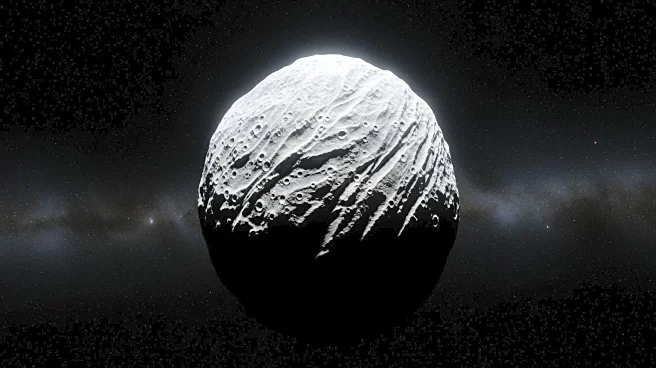What's Happening?
The Korea Research Institute of Standards and Science (KRISS) has made a groundbreaking discovery by observing a new ice phase, named Ice XXI, under extreme pressure conditions. This discovery was achieved by using a dynamic diamond anvil cell (dDAC)
to compress water beyond 2 gigapascals (GPa) while maintaining room temperature. The experiment revealed a new crystallization pathway, marking the first identification of the 21st crystalline form of ice. This research involved a collaboration of 33 scientists from multiple countries, including the USA, and was conducted using the European XFEL, the world's largest X-ray free-electron laser facility.
Why It's Important?
The discovery of Ice XXI is significant as it expands the understanding of water's behavior under extreme conditions, which is crucial for high-pressure physics and planetary science. The density of Ice XXI is comparable to the high-pressure ice layers found on the icy moons of Jupiter and Saturn, suggesting potential implications for understanding extraterrestrial environments and the origins of life in space. This research could lead to the development of new materials that do not naturally occur on Earth, offering advancements in various scientific fields.
What's Next?
Future research will likely focus on exploring the properties of Ice XXI and its potential applications. The KRISS team plans to continue investigating ultrahigh-pressure environments, which could open new scientific frontiers. The findings may also prompt further studies into the conditions on icy moons and other celestial bodies, potentially influencing space exploration strategies and the search for life beyond Earth.
Beyond the Headlines
The discovery of Ice XXI highlights the importance of international collaboration in scientific research. It also underscores the potential for advanced technology, such as the dDAC and XFEL, to unlock new scientific insights. This research may inspire further exploration into the role of high-pressure ice phases in the universe, potentially reshaping theories about planetary formation and the conditions necessary for life.













